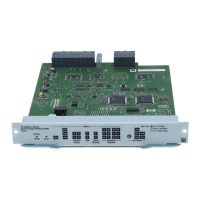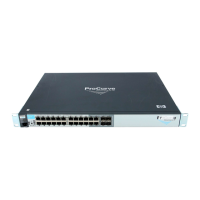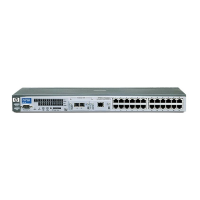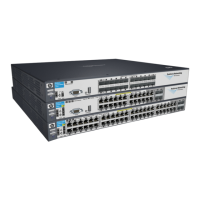RADIUS Authentication and Accounting
Configuring RADIUS Accounting
■ If access to a RADIUS server fails during a session, but after the client
has been authenticated, the switch continues to assume the server is
available to receive accounting data. Thus, if server access fails during
a session, it will not receive accounting data transmitted from the
switch.
Steps for Configuring RADIUS Accounting
1. Configure the switch for accessing a RADIUS server.
You can configure a list of up to three RADIUS servers (one primary, two
backup). The switch operates on the assumption that a server can operate
in both accounting and authentication mode. (Refer to the documentation
for your RADIUS server application.)
• Use the same radius-server host command that you would use to
configure RADIUS authentication. Refer to “3. Configure the Switch
To Access a RADIUS Server” on page 6-13.
• Provide the following:
– A RADIUS server IP address.
– Optional—a UDP destination port for authentication requests.
Otherwise the switch assigns the default UDP port (1812; recom-
mended).
– Optional—if you are also configuring the switch for RADIUS
authentication, and need a unique encryption key for use during
authentication sessions with the RADIUS server you are desig-
nating, configure a server-specific key. This key overrides the
global encryption key you can also configure on the switch, and
must match the encryption key used on the specified RADIUS
server. For more information, refer to the “[key < key-string >]”
parameter on page 6-13. (Default: null)
2. Configure accounting types and the controls for sending reports to the
RADIUS server.
• Accounting types: exec (page 6-49), network (page 6-48), or system
(page 6-49)
• Trigger for sending accounting reports to a RADIUS server: At
session start and stop or only at session stop
3. (Optional) Configure session blocking and interim updating options
• Updating: Periodically update the accounting data for sessions-in-
progress
• Suppress accounting: Block the accounting session for any
unknown user with no username access to the switch
6-50
